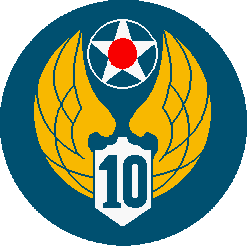 |
 |
 |
 |

| MODEL | B-17D | B-17E |
| WING SPAN |
103'�93/8" | 103'�93/8" |
| LENGTH | 67'�105/8" | 73' 9�" |
| POWER | 4 Wright R-1820 1000HP | 4 Wright R-1820-91 1000HP |
| ARMAMENT | 6 .50 Cal Browning MG 1 .30 Cal browning MG |
8 .50 Cal Browning MG 1 .30 Cal Browning MG |
| EMPTY WEIGHT (Lbs) |
30,963 | 33,279 |
| COMBAT WEIGHT (Lbs) |
39,319 | 40,260 |
| TOP SPEED (Mph) |
318 | 318 |
| CRUISING SPEED (Mph) |
??? | 226 |
| MAXIMUM RANGE (Miles) |
2,540 | 3,300 |
| CEILING (Feet) |
37,800 | 35,000 |
| CREW | 8 | 10 |
�����The Boeing B-17 "Flying Fotress" was devolped in response to an August, 1934 Army Air Corps specification for a multi-engined aircraft capable of carrying 2,000 lbs of bombs at speeds of more than 200 MPH a distance of 2,000 miles. Boeing, Martin and Douglas submited designs to meet the specifications set forth, with the Martin and Douglas designs being 2 engined machines, while the Boeing design boasted 4 engines. First flown on 28 JULY 1935, it was the largest land plane ever built in the United Sates up to that time. Legend has it that the B-17 received it's nick name when one reporter covering the roll out of the prototype reacted to the immense size of the aircraft and the number of gun emplacements by exclaming "Why, it's a flying fortress".
�����Whatever the actual origin of the B17's nickname, it cannot be denied that it was indeed the largest, most complex aircraft ever built in the U.S at that time. Some, in fact, believed that it was too complex an aircraft for anyone to fly, a belief that was re-enforced when the protype crashed at Wright Field on 30 OCTOBER 1935, killing Boeing's chief test pilot, Leslie Tower, the Army Air Corps test pilot assigned to the project, Lt. Donald Putt, and the chief of Wright Field's Flight Test Section, Maj. Ployer T. Hill. The crash, coupled with vagaries of the depression economy caused the Army to scale back orders for service test aircraft, first from 185 to 65, and then to a meager 13.
�����Despite these set backs, the B-17 became the back bone of the U.S. Army Air Forces offensive bombing forces, and was used to develop and perfect the technique of daylight strategic bombing. When WW II began in Europe in September, 1939 the B-17 was the only operational heavy bomber in service in the United States. In 1940 a number of B-17C models were lend leased to Britain, with the disclaimer that they were not suitable for use in combat and should be used only to train air crews while awaiting the newer E model then on the drawing boards. Despite this warning, the British sent the B-17 into combat against the German Luftwaffe with disasterous results. The failure of the B-17C to deliver the expected results against powerful fighter opposition convinvced the British that any attempt to bomb the enemy during daylight was sheer folly and would result in unacceptable losses.
�����By the time of the Japanese attack on Pearl Harbour, Hawaii, the new and more powerful B-17E was begining to enter service. Featuring a larger vertical stabilizer, as well as added defensive fire power in the form of two .50 Cal guns in a tail turret at the rear of the aircraft, the B-17 had finally become a true ccombat aircraft, capable of defending itself against enemy fighters.
�����While the B-17 was certainly a capable heavy bomber, the operational demands of combat in the Pacific and China-Burma-India soon revealed that it lacked both the range and bomb carrying capacity needed in these theaters of operation and it was soon replaced by the faster, longer ranged, heavier load carrying Consolidated B-24 "Liberator". The B-17 equiped the 10th Air Force's 7th Bombardment Group (Heavy) from 1937 until October, 1942.
Aircraft |
Links |
Library |
Sections |
Units |